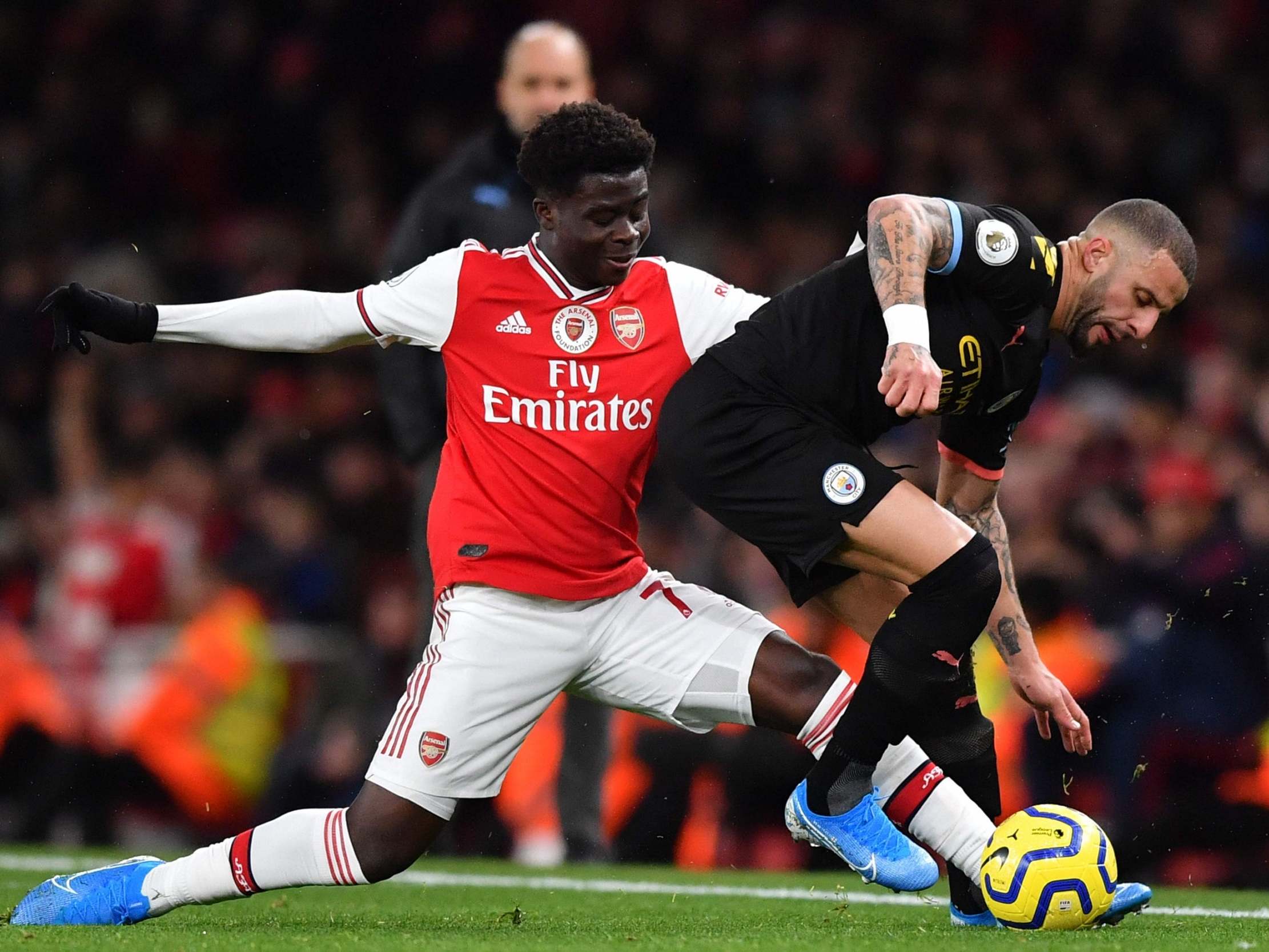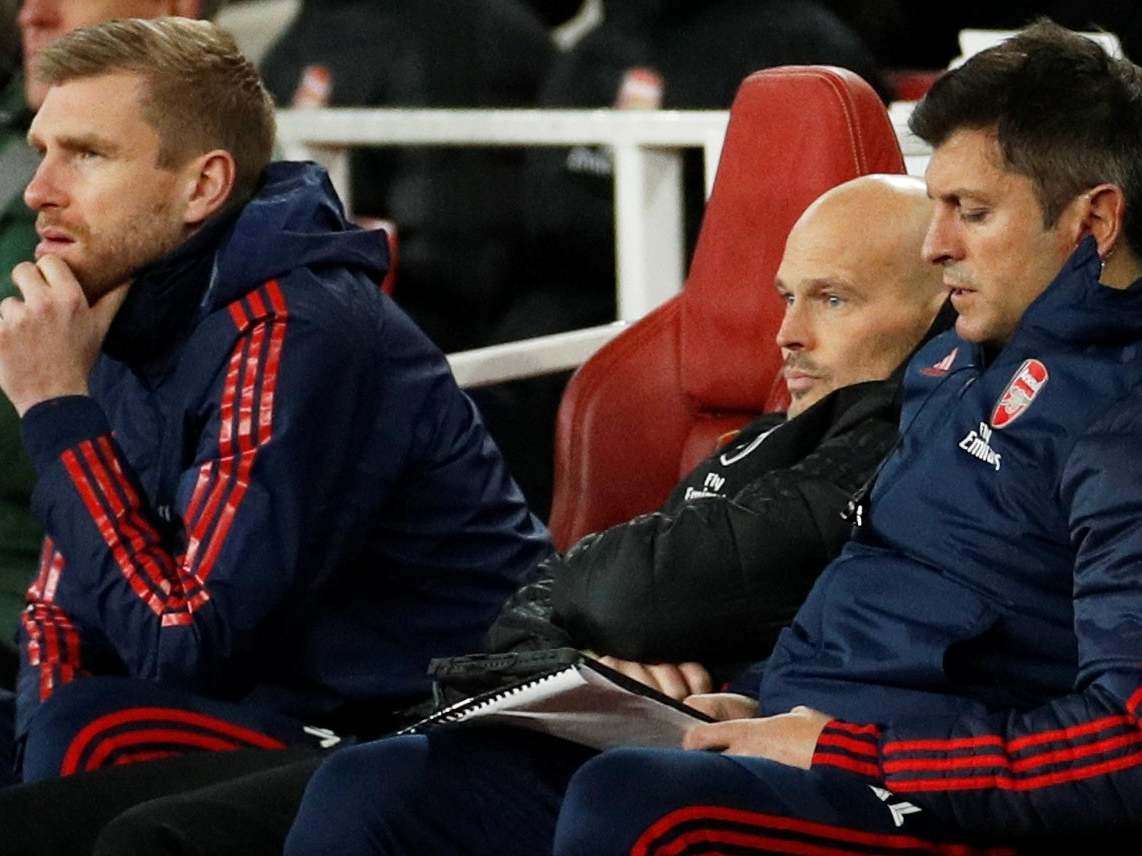Arsenal left in disarray as lack of framework at top hinders Freddie Ljungberg’s impact on pitch
The role of Per Mertesacker symbolises the mess surrounding the Gunners right now

Your support helps us to tell the story
From reproductive rights to climate change to Big Tech, The Independent is on the ground when the story is developing. Whether it's investigating the financials of Elon Musk's pro-Trump PAC or producing our latest documentary, 'The A Word', which shines a light on the American women fighting for reproductive rights, we know how important it is to parse out the facts from the messaging.
At such a critical moment in US history, we need reporters on the ground. Your donation allows us to keep sending journalists to speak to both sides of the story.
The Independent is trusted by Americans across the entire political spectrum. And unlike many other quality news outlets, we choose not to lock Americans out of our reporting and analysis with paywalls. We believe quality journalism should be available to everyone, paid for by those who can afford it.
Your support makes all the difference.There are many examples of how Arsenal are in desperate need of more structure. Perhaps the most vivid is in the dugout.
When Unai Emery was sacked, he along with three first-term coaches – Juan Carlos Carcdeo, Pablo Villa and Javi Garcia – left the club. As we approach three weeks on, none of those four have been properly replaced.
There is an obvious sense of disarray around Freddie Ljungberg’s occupation of the manager’s chair, but at least he knows it is almost certainly not his to keep. However, it is the man he enlisted to help him, Per Mertersacker, whose situation best represents the disintegration of the framework at a club that once prided itself on the professionalism of its organisation from the top down.
“For me, it’s a great honour to do this, but Per is doing two jobs,” said Ljungberg of his right-hand man who currently splits his time between working with the first team and his primary role as manager of Arsenal’s academy. Mertesacker has held this post since 2017 and it is one which, up until last month, has been his sole focus. “I’ve said it needs to be cleared up and it would be good to make a decision regardless of what it is.”
Ljungberg has been measured when assessing defeats, and the 3-0 loss to Manchester City on Sunday was particularly demoralising for Arsenal’s inability to trouble their opponents. But clarity on the German’s role and the need to bring in more coaching staff are two topics he continues to be particularly forceful on.
You can understand why the board are reluctant to bring in new coaches just yet. Whoever comes in to relieve Ljungberg on a more permanent basis will invariably want to bring in his own staff. Therefore, there is no use employing coaches who will then be let go when a new man comes in, nor is it wise to hamstring a new manager with staff he has not chosen himself.
But the indecision of the power brokers at the Emirates is also a problem. The variety on their shortlist – from the experience of Maximiliano Allegri to Mikel Arteta for what would be his maiden first-team manager role – restricts them from building an exciting coaching team ahead of time as the candidates have wildly different philosophies and requirements. Arteta, for example, is more hands-on and thus would not require a conduit between him and the players in training that a more hands-off Allegri might.
It is clear the current boardroom impasse on coaches is having a negative effect on the pitch.
Since Ljungberg’s opening match against Norwich the Swede has looked to address Arsenal’s structure during transitions. Though he is happy with the players he has in the positions most critical to retraining shape when the game flows back and forth, it still proved their undoing against City and an inspired Kevin De Bruyne. “The transitions got us down again,” bemoaned Ljungberg.

But as exceptional as De Bruyne was, bagging two goals and an assist, even the Belgian acknowledged how easy things were because of Arsenal’s general set-up, such as their unregimented initial press.
“The attackers try to press up when we pass their front four,” started De Bruyne in his post-match interview, “but they don’t help the Arsenal defence. They always stay with four upfront, except Martinelli who comes a little bit more so we always get spaces all over the pitch and so I think it’s really difficult for the six defenders to control it because obviously you can come from everywhere on the pitch.”
How you deal with transitions and ensuring your pressing game is robust enough to cope with a City side who do both better than most is absolutely vital to thrive at the top end of modern football, which is where Arsenal expect to be. But it takes hours and hours on the training ground to master both disciplines. There’s a reason Pep Guardiola uses pre-season to groove these patterns and perfect every last movement and merely tops up this work between matches.
Time has been Ljungberg’s scarcest commodity, even if he came into the job knowing exactly the problems to address. Since officially taking over on 29 November he has overseen five matches in 16 days. When you factor in travel, rest days and analysing upcoming opposition, there has been little time for the necessary amount of intense work to correct these fundamentals.
That becomes even tougher when you’ve not got the man-power to effectively relay messages and drill a largely young and inexperienced squad struggling for confidence.

As De Bruyne said, it really did seem like City were coming from everywhere, even in situations where they were outnumbered. The first goal had six red shirts in the box to the visitors four in black, and then five on two for the second. The third – De Bruyne’s second, struck from the edge of the box – was the result of five Arsenal defenders backing off deep when they’d have been better served holding the edge of their box. Their defensive shape collapses at the merest hint of pressure.
Even something as trivial as ensuring a substitute is ready to come on is proving hard work. Buyako Saka was jogging on the spot waiting to join the fray as the hosts played on with 10 men after left-back Sead Kolasinac had to leave the field through injury. Saka, who was not ready to complete the swap immediately, eventually came on as City were celebrating their third.
Ljungberg talked of the moment as another aspect to work on: that Saka “had a lot of clothes on” and should have stripped quicker, while Kolasinac could have stayed down for longer to buy more time. It was a situation that summed up just how much plate-spinning there is being done by an already stretched coaching set-up and, subsequently, the kind of basic mistakes Ljungberg and Mertesacker are prone to make if they do not get more help. As lax as Saka was, those two have enough playing experience between them to ensure something so farcical should never have happened.
The incident, much like the match and Arsenal’s current situation, is an accurate reflection of where the club is at. The professional structure, lines of communication and vision, from top to bottom, have broken down.
Join our commenting forum
Join thought-provoking conversations, follow other Independent readers and see their replies
Comments